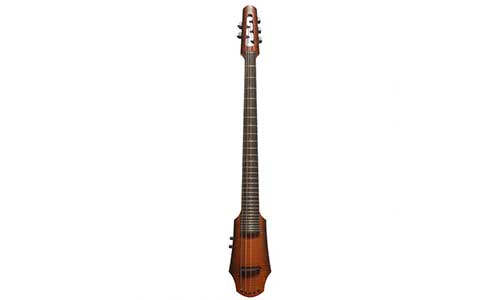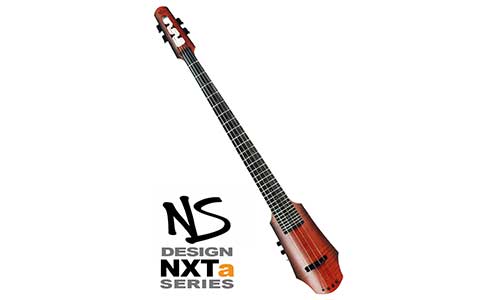Typically, bowed strings musical instruments like violin, double bass, viola, and cello only sometimes have frets. Historically these instruments have always been fretless. Just like fretted instruments have their unique advantages, fretless ones also do.
There are unlimited tonal possibilities with fretless instruments like the cello, viola, violin, and double bass. You are not bounded or constricted to the standard intonation of whatever style of music you are playing.
With fretless instruments, there is almost an unlimited tonal possibility. However, amidst all of these advantages, there are also challenges. Surprisingly, even though one major advantage is in the aspect of intonation, one major disadvantage is also in the aspect of intonation.
Frets help players maintain standard intonation. They provide a fixed guide and boundary that players often play around with in intonation. Once the instrument is tuned and you are fretting the desired fret, you will most likely stay in pitch.
That is because there are no possibilities for micro pitches and tonalities. As a result, this makes fretted instruments much less challenging and much more beginner-friendly. This is unlike fretless instruments like the violin, viola, double bass, and cello.
The typical fretless cello is undoubtedly much more challenging than any other musical instrument with frets. The absence of frets only heightens the bar of musicianship when learning to play this instrument.
You need top-tier aural perception skills to play fretless stringed instruments properly. That explains why the fretted cello was birthed. However, this is not a comparison article versing the fretless and fretted cello.
Rather, this is to present some amazing fretted cellos you will ever come across or lay your hands on. It doesn’t matter if you are a total beginner looking for a superb fretted cello to begin your learning journey with or if you are a seasoned pro just looking to try it out.
Regardless of why you are searching for a fretted cello, just read on! There is something for everyone.
Table of Contents
3 Best Fretted Cellos
Review of the Best Fretted Cellos
NS NXT5a Fretted Cello

The NS NXT5a Fretted Cello is an electric cello manufactured by NS Design. It is a 5-string cello that offers frets on the fingerboard, allowing for precise intonation and facilitating the transition for musicians familiar with fretted instruments.
It features a fretted fingerboard made of Richlite composite, which allows for precise intonation and facilitates playing in difficult sound monitoring situations. The neck is reinforced with a steel rod, ensuring stability and durability.
The instrument is crafted with a solid, straight-grain maple body and neck, providing a high-quality construction. Its overall design combines the character and advantages of a guitar with the power and performance of a standard cello.
Regarding sound and sonic characteristics, the NS NXT5a Fretted Cello has a Polar Pickup System, delivering a clear and expressive sound. It features a dual-mode active output, allowing you to switch between different tonal options.
The cello produces a rich and resonant tone, handling various musical styles and genres. Whether you prefer a traditional acoustic sound or want to explore more contemporary and experimental styles, this cello offers versatility and flexibility in shaping your desired tone.
Regarding its physical attributes, the NS NXT5a Fretted Cello has a scale length of 69.5 cm and weighs approximately 1.9 kg. It has a tripod stand, charger, and gig bag for convenient portability and storage.
Lastly, the instrument is intended for serious cellists looking to expand their musical horizons and explore new possibilities. It is suitable for professional musicians and advanced students seeking a high-quality electric cello for performances, recordings, and practice.
| Pros | Cons |
| World-class design and craftsmanship | Priced at around USD 2,600, making it an expensive instrument |
| Active circuitry for easy integration with amplification equipment | Difficult to repair as the instrument is rare |
| Adjustable treble and bass controls for tone customization | Departure from the traditional sound |
| Versatile sound optimization for electric tone, acoustic tone, or pizzicato playing | Limited expressiveness |
| Battery-free dual-mode active-passive electronics | |
| High-quality polar pickup system |
Dashtick Guitars Electric Cellotar C3 (Handmade Electric Cello)
The Electric Cellotar C3 is a fully fretted cello with three strings and a magnetic pickup. It offers the flexibility to be played on a strap, similar to a guitar or stand, like a traditional cello.
This instrument stands out as an electric cello with a fretted design, allowing players to explore both guitar-like playing techniques and traditional bowing.
Additionally, it includes a wooden case that doubles as a sound box, making it convenient for spontaneous practice sessions even without amplification.
The fretted design allows you to play the instrument and achieve cello-like sounds easily. It comes with a bow, enabling players to use traditional bowing techniques.
The sound of the Dashtick Handmade Electric Cello is often described as warm, woodsy, and unique. Its piezo or magnetic pickup produces a distinct electric cello sound when amplified.
The tonal characteristics can vary depending on the specific model and pickup configuration. It is primarily designed for guitarists who wish to explore the sounds and techniques of the cello.
Equipped with geared tuning pegs, this model ensures easy and precise fine-tuning. Its metal strings beautifully interact with the humbucker pickup, specifically, the Original Flatpup, resulting in a rich, resonant tone that carries both warmth and depth.
Next, It can be used across various genres and musical styles, including classical, jazz, rock, and experimental music. Lastly, the instrument is made of genuine leather, ash wood, copper, ebony, snakeskin, etc.
| Pros | Cons |
| It offers a nice sound and high-quality craftsmanship | Limited availability in the market, making it a less common choice and hard to find maintenance and repair |
| Its hand-made build makes every piece of the instrument unique, such that no two instruments are alike. | Some purists argue that frets don’t work well on a cello and can affect the instrument’s unique sound and playing technique. |
| Provides versatility with the ability to be played on a strap or a stand | May not provide the same expressive capabilities as traditional unfretted cellos due to differences in string transit and bow stimulation |
| It comes with a wooden case that serves as a soundbox, ideal for impromptu practice sessions without amplification | |
| Equipped with geared tuning pegs for easy and precise fine-tuning | |
| It delivers a warm and deep tone through the interaction of its metal strings with the humbucker pickup | |
| Affordable as compared to other fretted cellos in the market |
NS NXT4a Fretted Cello

The NS Design NXT4a Cello is a remarkable instrument skillfully crafted by renowned makers in the Czech Republic. It combines the unique qualities of a guitar with the power and performance of an electric cello, offering musicians exciting new avenues of expression.
With its versatile design, the NXT4a Cello can adapt to various music styles, accommodating different playing preferences. It enables musicians to explore various techniques, including tapping, hammer-ons, and glissando, opening up a world of expressive possibilities.
The presence of frets on the NXT4a Cello ensures sustained tones during pizzicato playing and provides accurate pitch even in high-volume performances. This feature enhances the instrument’s versatility and reliability on stage.
One standout attribute of the NXT4a Cello is the NS Design Polar™ Pickup System, which elevates its sonic capabilities. With a pair of distinct transducers positioned below the bridge, the setup provides dynamic reactions and many tonal possibilities.
Musicians can select between a traditional arco mode for a percussive attack and a dynamic bowed response or a pizzicato mode for a smooth and sustained tone.
Constructed with a solid maple body and neck, along with a graduated ebony fingerboard, the NXT4a Cello delivers a rich and resonant tone.
The asymmetrical fingerboard relief ensures comfortable playability across all positions, and adjustments can be made using the neck’s truss rod, allowing players to personalize their playing experience.
The NXT4a Cello is installed with NS Contemporary Bass Strings by D’Addario™, supporting a diverse selection of electric or conventional acoustic upright bass string options.
This adaptability enables musicians to tailor their sound to suit different musical genres and styles.
For added convenience and support, the NXT4a Cello includes essential accessories. The NXT Cello Tripod Stand provides stable support and adjustable positioning to accommodate various playing styles.
The accompanying NXT Gig Bag offers protection and storage with dedicated compartments for the tripod stand, bow, charger, and accessories.
Optional extras, such as the NS Traditional Cello End Pin Stand, NS CR End Pin Stand, NS CR Tripod, NS CR End Pin Stand Conversion Kit, NS Frame Strap System, and NS Flight Case, offer further customization and convenience for musicians seeking specific performance requirements.
| Pros | Cons |
| A versatile instrument with a guitar’s character and an electric cello’s power. | Limited availability and potential shipping delays. |
| Offers a wide range of playing styles and techniques, including tapping, hammer-ons, and glissando. | A lack of flexibility in pitch adjustment can limit the expressiveness of the instrument. |
| Frets provide sustained tones during pizzicato playing and accurate pitch in high-volume performances. | Since most classical cello repertoire is written for traditional cellos without frets, fretted cellos may be unsuitable for certain musical genres and performance contexts. |
| NS Design Polar™ Pickup System enhances the instrument’s sonic capabilities. | The presence of frets requires a different approach to finger placement and intonation, which can initially be difficult for experienced cellists. |
| Two separate transducers beneath the bridge offer dynamic responses and versatile tonal options. | Reduced Vibrato Control |
| The construction features a solid maple body and neck, creating a rich and resonant tone. | Limited Customization |
| Asymmetrical fingerboard relief ensures easy playability across all positions. | |
| The fingerboard relief can be adjusted through the neck’s truss rod. | |
| Equipped with NS Contemporary Bass Strings by D’Addario™, offering compatibility with standard electric or acoustic upright bass strings. | |
| Comes with useful accessories, including the NXT Cello Tripod Stand and NXT Gig Bag |
A Brief History of Frets
Frets have been an integral part of stringed instruments for centuries. The exact origin of frets is challenging, but they have been used in various forms in ancient and traditional instruments from different cultures worldwide.
An ancient illustration dating back to approximately the 3rd century C.E. was unearthed in 1907 at the Niya archaeological site in Xinjiang, China. That speculates the invention of frets around that time.
Similarly, according to Wikipedia, artworks dating back to the 6th-10th centuries C.E., specifically those found in the Mogao Caves (558-907 C.E.) and Yulin Caves (618-907 C.E.), reveal the presence of frets on stringed instruments.
These Buddhist artworks depict musical instruments, such as lutes, adorned with frets, which are raised metal strips placed across the instrument’s fingerboard. Similarly, the Utrecht Psalter (c. 850 C.E.) in France showcases long lutes with frets, as seen in the artistic representations.
Additionally, citoles from Spain featured in the Cantigas de Santa Maria (c. 1280) exhibit frets. These findings demonstrate the use of frets in musical instruments during the mentioned periods, providing insights into the musical practices of the era.
Next, it’s important to note that the early frets were made of bone, but with metal strings, the bone became impractical due to wear and tear.
Including frets greatly enhanced pitch intonation accuracy, particularly in instruments like the bass guitar. Moreover, advancements have been made in the design of frets to accommodate different tuning systems, such as microtonal guitars with movable frets.
These innovations reflect the ongoing evolution of frets in meeting the needs of musicians and expanding the possibilities of musical expression.
Fretted Cellos – Why Want That?
Frets can benefit beginners or those transitioning from fretted instruments like guitars. Frets provide clear visual references for finger placement, making finding and playing the correct notes easier.
For novices, frets can offer a sense of security and assist in developing intonation. Additionally, they can simplify the process of playing chords accurately, as the frets determine the positions for correct notes.
Here is a list of all advantages of using Fretted Cellos:
Expedited learning process
Fretted cellos provide a visual aid for finger placement on the neck, making it easier to learn the fretboard and locate specific notes.
That can be especially beneficial for beginners or those transitioning from fretted instruments like guitars, as it helps them quickly understand the cello’s fingerboard.
Enhanced intonation and accuracy
Frets serve as markers for precise pitch positions, ensuring consistent intonation and making achieving accurate notes and chords easier. This advantage can be particularly valuable for players who struggle with intonation or want to improve their instrument accuracy.
Open string sustain
Fretted cellos, especially when playing pizzicato (plucking the strings), provide open string sustain for every note, offering new performance and textural possibilities. That can be advantageous for certain playing styles or musical genres.
Rock band compatibility
Fretted cellos were introduced in the 1970s to allow violin and cello players to perform with rock bands. They addressed the challenges of playing softly and staying in tune amidst louder instruments.
Therefore, fretted cellos can offer improved volume and intonation for musicians seeking to incorporate cellos into contemporary genres.
Lastly, it’s important to note that while fretted cellos have advantages, traditional fretless cellos remain the standard and are preferred by many professional cellists.
Temporary Frets on Cellos
Temporary frets for cellos are removable devices that can be attached to the fingerboard of a cello, providing a temporary fretted experience for players.
They can be useful for beginners who want to get a feel for playing a fretted cello before investing in a fretted instrument. They allow you to experience frets’ finger placement and intonation benefits without committing to a permanent modification.
Further, temporary frets are typically adhesive strips or stickers that can be applied to the cello’s fingerboard. They can be easily attached and removed without causing damage to the instrument.
That allows players to experiment with fretted playing without altering the cello permanently. Further, they also provide a visual aid for finger placement, aiding the learning process and helping players locate specific notes on the fingerboard.
They can assist in developing better intonation and accuracy, which are essential skills for cellists. Additionally, temporary frets can be a cost-effective way to explore the fretted cello experience before investing in a dedicated fretted instrument.
Regarding the disadvantages of temporary frets, while temporary frets can benefit learning and experimentation, it’s important to note that they do not replicate the full experience of playing a professional fretted cello.
The feel and response of a dedicated fretted instrument may differ from a cello with temporary frets. Additionally, traditional fretless playing techniques, such as vibrato, cannot be fully utilized with temporary frets.
Pros and Cons of Fretted Cellos
Pros
- Advantages for beginners
For beginners who are new to the cello, fretted cellos offer advantages in terms of ease of learning. The frets on the fingerboard can assist beginners in achieving accurate finger placement and proper intonation. - Open string sustain
Fretted cellos, particularly when playing pizzicato (plucking the strings), can provide “open string” sustain for every note, enhancing the instrument’s sustain and resonance. - Performance possibilities
Including frets on the fingerboard of cellos can open up new avenues for performance and experimentation, especially in playing techniques such as pizzicato.
Fretted cellos offer unique performance possibilities and a wider range of textural options.
Cons
- Limited tonal flexibility
When considering the differences between fretted and traditional fretless cellos, it’s important to note that they may have certain limitations regarding tonal flexibility.
Unlike traditional cellos without frets, fretted cellos might offer less control over intonation, microtonal nuances, and expressive techniques such as vibrato. - Not widely used by professional classical musicians
In the classical music world, fretted cellos are generally considered novelties, and it’s worth mentioning that professional classical musicians do not commonly use them.
The fact that professionals must embrace fretted cellos suggests that they are not widely accepted within the classical music community. - Availability and familiarity
Fretted cellos may be less widely available than traditional ones, and finding teachers or resources specifically tailored to fretted cellos could be more challenging.
Conclusion
In conclusion, fretted cellos offer several advantages, especially for beginners or those transitioning from fretted instruments.
They provide visual references for finger placement, expedite learning, enhance intonation and accuracy, and offer open string sustain and rock band compatibility.
However, fretted cellos may have limited suitability for certain musical genres and performance contexts, and some purists argue that frets can affect the instrument’s unique sound and playing technique.
Nevertheless, temporary frets can be useful for players who want to experience the benefits of fretted cellos without permanently modifying their instruments.
While fretted cellos have their merits, traditional fretless cellos remain the preferred choice of many professional cellists.





